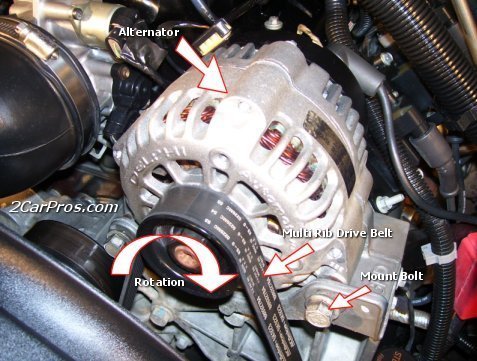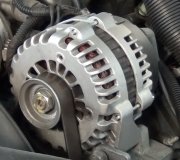AGHHHHH! Do not disconnect the battery! That was a trick done many years ago by mechanics who didn't understand how to troubleshoot these simple systems. You are lucky the engine died. The battery is the single most important item that prevents system voltage from going too high and destroying the dozen computers on the van.
Some engines will stall when the battery is disconnected even when there is no other problem. That has to do with the ripple that is naturally coming out of the generator and the computerized engine controls, but that is more of a GM thing.
Without going into all the theory about ripple, field current, and how voltage regulators work in conjunction with the battery, it is possible for system voltage to go to over 30 volts when there's no battery in the system. The voltage regulator doesn't have enough control to prevent that.
Now that I'm done wagging my finger at you, this system can be diagnosed starting with measuring the three voltages on the three wires on the back of the alternator. The large output wire must have full battery voltage all the time. One of the smaller wires will have full battery voltage and the other one must have less but not 0 volts. Those last two MUST be measured while the engine is running.
Most commonly you will find 0 volts on the second small wire. That's an indication of worn brushes in the alternator. They can be replaced without even removing the alternator from the engine but most people just replace the entire alternator. I built a lot of "bugs" into these charging systems for my students to troubleshoot. Here's some photos of what the brush assembly looks like.
The first one shows the belt removed, the wires disconnected, and the alternator pivoted back for better access.
The second one shows the cover removed, and the the third one shows the brush assembly, (worn brushes on top still attached to the terminals block, and the new, longer brushes on the bottom.
Caradiodoc
Image (Click to make bigger)
Sunday, February 6th, 2011 AT 8:52 PM






